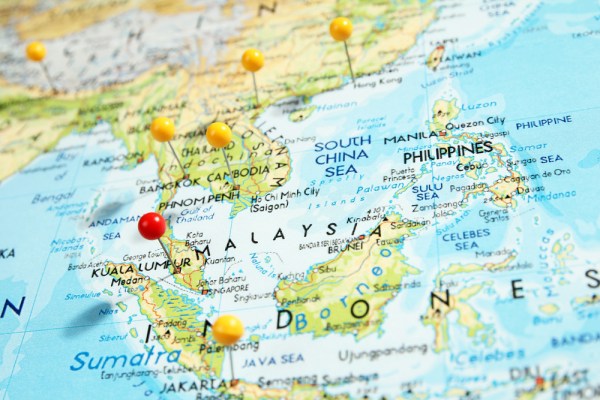Uber has abandoned its ‘land grab’ approach to Southeast Asia and instead switched its focus to new products and services as it begins to see profitability in key markets in the region.
A source at the U.S. company told TechCrunch that its operations are now profitable in Singapore and the Philippines, two of its largest markets for numbers of rides and revenue, with others close behind. Uber declined to respond to repeated requests for comment.
This is an interesting reveal since Uber said last month that it has reached profitability in all of its Western markets. Little is known about its emerging market presence, particularly in Southeast Asia — where it covers 15 cities across Singapore, Indonesia, Malaysia, Thailand, Vietnam and the Philippines.
The company entered the region via Singapore more than three years ago, but its most ‘recent’ new country expansion — Vietnam — was two years ago. Since then, its team has been tasked with scaling the business across the region, and now it has been decided that it is time to push on by introducing new services to tighten competition and grow its user base.
Despite a cumulative population of more than 600 million people, Southeast Asia sits in the shadow of China and India. That’s certainly been true for Uber, which has invested multiple billions into China via its Uber China subsidiary, while last summer it revealed a billion-dollar war chest to battle Ola, a $5 billion-valued rival backed by SoftBank, in India.
Southeast Asia, with its population spread across six primary countries with differing currencies, cultures, regulation barriers and languages, was a distant priority. But TechCrunch understands things are changing, with Uber keen to increase its rivalry with Grab, the ride-hailing service that claims 19 million app downloads and 350,000 drivers and is affiliated with Ola, China’s Didi and Lyft.
Food, carpooling and bike taxis
UberEats, its food-delivery service, its UberPool ride-sharing service, and UberMoto, its bike taxi service, are the three priorities, we understand. UberRush, its courier service, isn’t currently present in Asia but may also be introduced in selected markets before the year is out.
UberEats recently entered Singapore, which became its first launch market in Asia, and the company hinted that it would also bring the service to Bangkok, among other cities.
Singapore was also one of the first ports of call for UberPool, the service that lets passengers ride with others who are headed in the same direction to save costs and ease inner-city congestion. It is also in Indonesian capital Jakarta, while a similar service with shuttle buses launched in Manila, Philippines, this year.
Finally, there’s UberMoto, which hasn’t quite been the success story that Uber had for hoped. Initially launched in Bangkok in February, it was banned from the Thai capital in May, while it has also struggled to find legality in India, the second launch market.
Indonesia is the major focus for UberMoto now, but Uber has plenty of competition. Go-Jek, a local company backed by Sequoia, pioneered motorbike taxis as a service. With more than 200,000 bike drivers on its platform, it goes beyond helping passengers weave Jakarta’s gridlocked cities to get from A to B faster than four wheels. Go-Jek also offers services and food on-demand options. Establishing a motorbike taxi fleet as a platform for additional services is the same play that Uber is opting for, but it is up against a very strong incumbent.
Rivalries
Uber’s push for new services isn’t without other rivalries and resistance. Plenty of food-delivery companies exist in the region. That’s mainly FoodPanda, but Deliveroo recently came to town and there are bespoke companies, like Grain, too.
Then there are those that are financially well-equipped.
Go-Jek seems to be preparing itself for an arms race. Earlier this month, the Wall Street Journal reported that the startup — which only operates in Indonesia right now — is raising $400 million in fresh capital at a valuation of more than $1 billion. We’ve independently verified that with sources close to negotiations, who told us that the round could be completed within the next couple of weeks.
Go-Jek aside, Grab rivals Uber on motorbike taxis — as well as private cars — and the $1.6 billion-valued company has raised over $650 million to date. Its GrabBike service was also barred from Bangkok, but it continues to do business there as a delivery service for packages and documents. Grab recently disclosed that Indonesia is its largest market in terms of rides, but it did not provide raw figures for how its business is performing.
Grab has also introduced services. GrabHitch, its take on carpooling, launched in Singapore last year and has since expanded to Malaysia, while GrabFood is present in Indonesia. A Grab representative told us that, as of last month, GrabHitch counted 5,000 drivers in those two countries.
That’s not quite all. Grab last week announced plans to introduce a payments platform this year, initially in Indonesia. A payment system that can be used in shops and stores — Grab partnered with Indonesian retail conglomerate Lippo to kick this off — will take it in a different direction as it too seeks to grow its user base through services.
